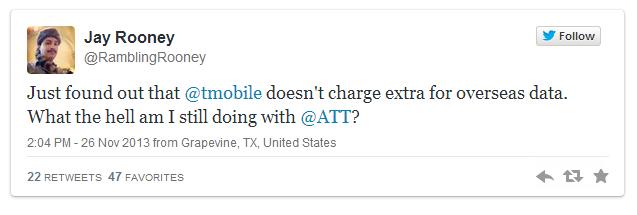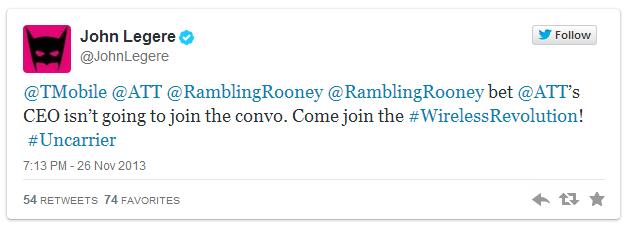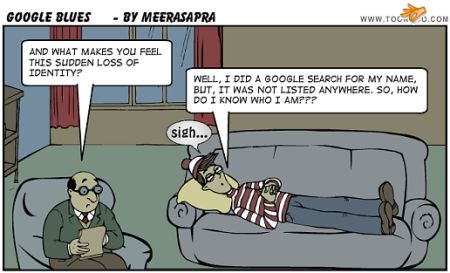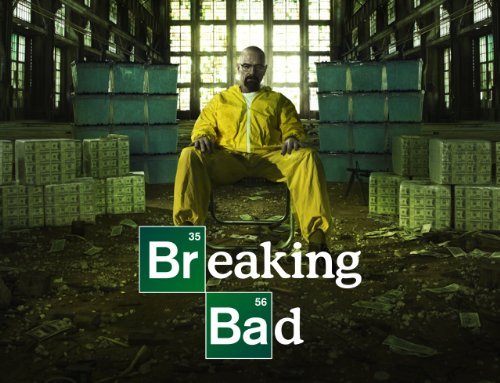
by Elizabeth Hines | Jan 27, 2014 | Blog, Manufacturing & Distribution, Marketing, Supply Chain
This post originally appeared on EBN.

For many customers, both current and prospective, you are your packaging. Take the time to do it right.
I recently read a great piece by Zach Williams, founder and creative director of Venveo, on the role of packaging from a marketing perspective.
Williams puts forth the idea that packaging is a critical element to marketing, and therefore, should become the fifth P in marketing (the other four being Product, Pricing, Placement, and Promotion). He makes the point that “packaging embodies so much more than promotion… [it] can make or break how your company is positioned.”
Williams discusses how packaging can create customer experiences. He offers the example of Apple’s packaging and how getting a box with the Apple logo on it creates an emotional response for customers. So emotional is the response that Williams pointed out that there are videos on YouTube of people “unboxing” their new products. When Williams wrote the article in October 2012, there were “thousands” of videos; when I looked today there were close to 3.5 million. That growth alone says a lot. And, the joy and excitement displayed in the videos speaks volumes to Apple, the product, and to the packaging itself.
Another company whose packaging has become iconic in the realm of creating customer experience is Tiffany & Co… New York Times writer Alice Rawsthorn wrote an articleabout the role Tiffany’s packaging played in her decision to purchase a pendant for her goddaughter: “Would I have bought that pendant without the packaging? I’m not sure, but the thought of Delilah opening that duck egg blue box tied with white satin ribbon certainly clinched my choice.”
Williams also notes that packaging can also serve to justify the price of the product and that “packaging should always aim to increase the perceived value of the product.” To Williams’s point, look at both Apple and Tiffany — their prices are higher than their competitors.
The final point in Williams’s article is that the packaging of a company needs to go beyond the physical and extend to the company’s website — that the website “can be considered packaging as well.” The point is a good one, but I think it should go further. I believe packaging should not only include the company’s website, but should also extend to the company’s Facebook and LinkedIn pages, Twitter account, blog, and any outward-facing materials. If your company does not take the time to create an exceptional package for customers, you will be passed over.
Your company’s physical packaging and online packaging speaks volumes about your company. For many customers, current and prospective, you are your packaging. Take the time to do it right.

by Elizabeth Hines | Jan 27, 2014 | Blog, Manufacturing & Distribution, Marketing, Supply Chain
This post originally appeared on EBN.

For many customers, both current and prospective, you are your packaging. Take the time to do it right.
I recently read a great piece by Zach Williams, founder and creative director of Venveo, on the role of packaging from a marketing perspective.
Williams puts forth the idea that packaging is a critical element to marketing, and therefore, should become the fifth P in marketing (the other four being Product, Pricing, Placement, and Promotion). He makes the point that “packaging embodies so much more than promotion… [it] can make or break how your company is positioned.”
Williams discusses how packaging can create customer experiences. He offers the example of Apple’s packaging and how getting a box with the Apple logo on it creates an emotional response for customers. So emotional is the response that Williams pointed out that there are videos on YouTube of people “unboxing” their new products. When Williams wrote the article in October 2012, there were “thousands” of videos; when I looked today there were close to 3.5 million. That growth alone says a lot. And, the joy and excitement displayed in the videos speaks volumes to Apple, the product, and to the packaging itself.
Another company whose packaging has become iconic in the realm of creating customer experience is Tiffany & Co… New York Times writer Alice Rawsthorn wrote an articleabout the role Tiffany’s packaging played in her decision to purchase a pendant for her goddaughter: “Would I have bought that pendant without the packaging? I’m not sure, but the thought of Delilah opening that duck egg blue box tied with white satin ribbon certainly clinched my choice.”
Williams also notes that packaging can also serve to justify the price of the product and that “packaging should always aim to increase the perceived value of the product.” To Williams’s point, look at both Apple and Tiffany — their prices are higher than their competitors.
The final point in Williams’s article is that the packaging of a company needs to go beyond the physical and extend to the company’s website — that the website “can be considered packaging as well.” The point is a good one, but I think it should go further. I believe packaging should not only include the company’s website, but should also extend to the company’s Facebook and LinkedIn pages, Twitter account, blog, and any outward-facing materials. If your company does not take the time to create an exceptional package for customers, you will be passed over.
Your company’s physical packaging and online packaging speaks volumes about your company. For many customers, current and prospective, you are your packaging. Take the time to do it right.

by Fronetics | Dec 2, 2013 | Blog, Marketing, Social Media, Strategy

Not too long ago I did not use Twitter and I relished being able to say that I had never sent a Tweet. I believed Twitter was not applicable to me – I don’t follow celebrity gossip and whereabouts, I don’t like the idea of sharing my personal thoughts and experiences with 232 million strangers, and I have yet to take a “selfie” (much less share it with said 232 million strangers). In short, I didn’t use Twitter because I did not understand Twitter and I had no idea of its value. When I finally decided to remove my head from the sand and take stock of Twitter I was blown away not only by what Twitter really is, but also by my ignorance. Using Twitter for business is essential. If you and your business have not yet taken the plunge into the Twitter pool it is time to grab your trunks and jump.
A 2013 study conducted by the Center for Marketing Research at the University of Dartmouth found that 77 percent of Fortune 500 companies have an active corporate blog. The study also found that rank influences Twitter use – 43 percent of the Twitter accounts are held by companies in the top 200 on the list as compared with the bottom 200 which hold 43 percent of the Twitter accounts. Similarly, 67 percent of the Inc. 500 use Twitter. Looking at small businesses, in 2013 Constant Contact reported that 25 percent of small businesses use Twitter – up from only 7 percent last year.
Why is it important to know who is using Twitter? Because those who are using Twitter are more likely to gain customers than those who don’t. A survey conducted by Market Probe International found that 72 percent of those who follow a business on Twitter are more likely to make a purchase from that business and that 82 percent of followers are more likely to recommend a product or service to friends and family. The survey also found that 85 percent of respondents reported feeling a closer connection to a small business if they follow them on Twitter.
In addition to demand generation, the following are reasons why you and your business should use Twitter:
- Increase market intelligence
- Drive traffic to your website
- Monitor your business and your brand
- Connect with customers
- Manage risk
- Share information
Still skeptical?
SJF Material Handling Equipment is the single largest source for new, used and refurbished material handling equipment in the US. The company has built an extensive and successful social media network – one which uses Twitter – with the objective of increasing sales. The company has 55,797 followers on Twitter (and is gaining 200 to 400 followers each week). Stafford Sterner, President of SJF, says that Twitter enables the company to cover more ground and attract customers from unexpected and often unrelated circles.
Another example is the battle for customers between AT&T and T-Mobile that played out on Twitter. The throw down began when Jay Rooney Tweeted that he was considering a switch from AT&T to T-Mobile.

What occurred next was an all-out battle between AT&T and T-Mobile for Jay Rooney (and other customers) – both companies took to Twitter to try to convince Rooney that their company and service is the best. Rooney does a great job of summarizing the exchange:

The battle for Rooney intensifies and T-Mobile’s Chief Executive John Legere jumps in the fray:

Impressed, Jay Rooney decides to make the jump to T-Mobile. What’s more, the conversation caught the attention of many others. In the end, the exchange netted customers for T-Mobile.
(For more on the exchange, check out ZDNet’s article on battle between AT&T and T-Mobile.)
Ready to take the plunge? Social Media Examiner has a great how to article on how to use Twitter for business and for marketing.

by Fronetics | Nov 25, 2013 | Blog, Marketing, Social Media, Strategy, Talent

First impressions are no longer face to face. Rather, a first impression is now comprised of information which can be gathered via a quick search of the Internet. A first impression can be, for example, inclusive of your LinkedIn and Facebook pages, your personal blog, your Instagram page, your Twitter account, your Klout score, your pins on Pinterest, and anything else that may have made itself onto the Internet. Because of this, that 7 seconds you used to have to make a first impression when you enter the room is gone – chances are that the first impression was made long before you arrived. The reality is that when you walk into that room you are likely being evaluated against the first impression that was made prior to your arrival.
In today’s world you are a brand. Like it or not, if you want to be successful you need to not only recognize this reality, but you also need to take steps to build and enhance your brand. Here is how to brand yourself.
1. Define your brand
In short, a brand is a story. What is your story? Take the time to sit down and look at where you have been and where you are. Where you want to be? What is your skill set? What experiences do you have? How are you unique? Take all of this information and knowledge and define your brand – define your story. Be clear, be concise, and be direct. If you can’t define you as a brand in a sentence or two, you have lost an opportunity.
2. Take stock
What information is “out there”? Start by making a list of all the social media accounts you have – even if you no longer actively use them
Next, Google yourself. What do you find? As G.I. Joe says, “Knowing is half the battle.”
3. Define a strategy
At this point you have a brand and you know what information about your brand is publicly available. Is the information enhancing or hurting your brand? What steps can you take to strengthen your brand? For example, should you adjust your privacy settings on some of your accounts so that personal information and exploits are not available for all to see? Does your LinkedIn page need to be updated? If you don’t take the time to define your strategy you will not be able to execute it effectively.
4. Take action
Frank Cavallaro recently wrote about moving from strategy to execution. He wrote: “Strategy is about making choices. Execution is about getting down and dirty so that those choices can produce results.” Don’t stop at creating the strategy – execute. And remember, the Internet is not static. What information about you has been added? Furthermore, it is important to periodically look at your brand. Is it still representative of where are and where you want to be? If not, take the time to re-brand yourself.
When you take the time to brand yourself you have the opportunity to define that first impression.

by Fronetics | Sep 24, 2013 | Blog, Leadership, Marketing, Strategy

Breaking Bad, AMC’s award-winning drama, is dark, violent, gritty – and it offers 9 essential business lessons.
1. Don’t cut corners; quality is paramount
Look, I like making cherry product, but let’s keep it real, alright? We make poison for people who don’t care. We probably have the most unpicky customers in the world.
You can make a million excuses as to why cutting corners is ok, but the reality is that cutting corners is not okay. Quality has a direct impact on your company’s productivity, profitability, costs, image, and customer satisfaction. Strive not to meet your customers’ expectations, but to exceed them.
2. Know your competition
While it is unlikely that knowing your competition is a matter of life and death as it is for anti-hero Walter White, it is necessary that you know who your competition is, what they are up to, and gain a competitive advantage. The company that is consistently first to the marketplace and is the best in the marketplace is the one that is noticed by customers.
3. Create strategic partnerships
You asked me if I was in the meth business or the money business. Neither. I am in the empire business.
Throughout the series, we watch Walt determine which partnership(s) will best serve to further his empire and then he does whatever necessary to establish those partnerships. Walt takes things to extreme, but he does offer a lesson – strategic partnerships are an essential component to a successful business.
If you are interested in learning how to choose a potential partner – you can check out a previous post I wrote on Find[ing] Your Perfect Outsource Mate.
4. Stick to what you know
Look. Let’s start with some tough love. You two suck at peddling meth. Period.
It is important to know and respect your core competencies. As I wrote previously, you need to determine your company’s core competencies and how you can deliver the best value to your customers. Are there services at which your company does not excel, or non-critical services which could be carried out more efficiently/effectively if the service were outsourced? If so, you may want to think about outsourcing.
5. Right person, right position
You may know a lot about chemistry man, but you don’t know jack about slangin’ dope.
Want to be the best? Make sure you hire the best and that you have the right person in the right position. This means instilling a rigorous performance plan and communicating with employees. This also means thinking outside the box – moving people within the company, hiring from outside the industry, and even firing people.
6. Establish a culture of innovation
Innovation is essential to Walt’s quest to establish an empire. While I don’t condone Walt’s murderous and vindictive actions, the guy does think out of the box and does recognize an innovative idea when he sees one.
A culture of innovation is essential to a successful business. Establish a culture that encourages employees to aspire to innovation and rewards innovation.
7. Have a contingency plan
Did you not plan for this contingency?
It is important that you not just have a risk management strategy for the big events, but that you also have a plan in place to deal with the everyday events that are more likely to occur.
8. Learn from your mistakes
Never make the same mistake twice.
Mistakes happen and, as James Joyce points out -“Mistakes are the portal of discovery.” That being said, learn from mistakes, do not repeat them.
9. Motivate your employees
I don’t believe fear to be an effective motivator.
An Inc. article astutely points out: “When you think about it, the success of any facet of your business can almost always be traced back to motivated employees. From productivity and profitability to recruiting and retention, hardworking and happy employees lead to triumph.”







